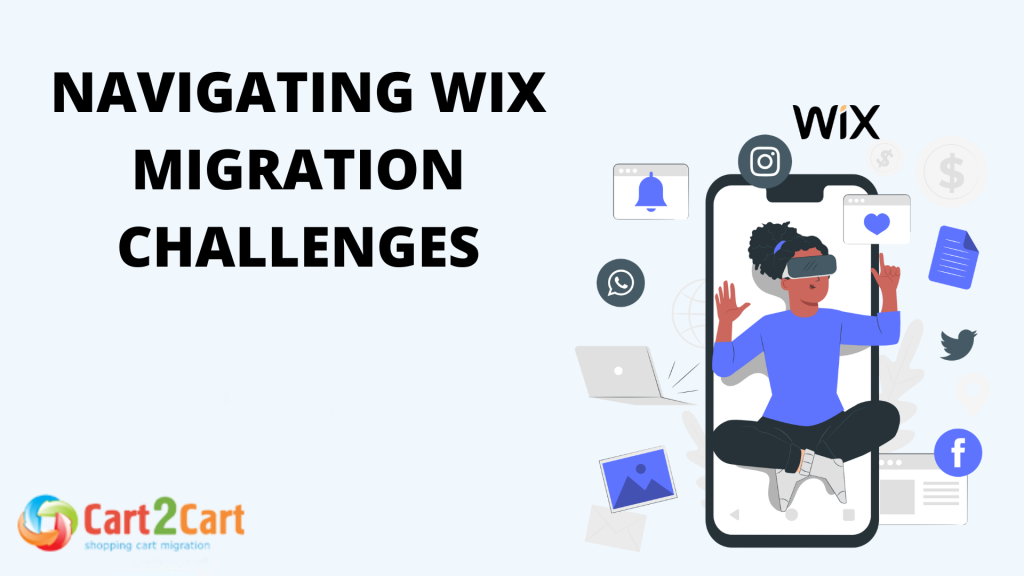
Migrating a website from Wix to another platform can be a complex process fraught with various challenges. Wix is a popular website builder known for its ease of use and extensive design options, but moving away from Wix requires careful consideration and planning. This comprehensive guide delves into the common Wix Migration challenges and provides actionable strategies to help you navigate them effectively.
Understanding Wix Migration Challenges
Wix’s user-friendly interface and extensive customization options make it a popular choice for website creation. However, migrating from Wix involves several key challenges, each of which needs to be addressed to ensure a successful transition. This section provides an overview of the primary Wix migration challenges and outlines why they are significant.
1. Design and Layout Compatibility
One of the most prominent challenges in Wix migration is preserving your website’s design and layout. Wix allows for extensive customization, which may not always translate seamlessly to other platforms.
Key Issues:
- Template Differences: Wix’s unique templates and design elements may not be available or compatible with other website builders or CMS platforms. This can result in a loss of design integrity during migration.
- Custom Code: Wix allows for the use of custom code and third-party apps, which may not function properly or at all on the new platform. This can affect the appearance and functionality of your site.
Solutions:
- Recreate Design Elements: Work with a web designer or developer to recreate your Wix design on the new platform as closely as possible.
- Use Similar Templates: Choose a template on the new platform that closely resembles your Wix design to minimize discrepancies.
- Custom Code Assessment: Review any custom code and third-party apps used on Wix and find equivalents or alternatives on the new platform.
2. SEO and Content Transfer
Maintaining your website’s SEO performance and ensuring that content transfers correctly are crucial aspects of Wix migration. SEO settings and content must be carefully managed to avoid a drop in search engine rankings.
Key Issues:
- URL Structure: Wix uses a specific URL structure that may differ from other platforms. Changes in URL structure can impact SEO and cause broken links.
- Meta Tags and Descriptions: Meta tags, descriptions, and other SEO elements may not automatically transfer, affecting your site’s search engine visibility.
Solutions:
- Preserve URL Structure: Try to maintain the same URL structure as much as possible on the new platform. If changes are unavoidable, implement 301 redirects to guide search engines and users to the new URLs.
- Manual SEO Configuration: Recreate meta tags, descriptions, and other SEO settings manually on the new platform to ensure that your site remains optimized for search engines.
3. Functionality and Features
Wix offers various built-in functionalities and integrations that may not be available on other platforms. Migrating these features requires careful planning and adjustment.
Key Issues:
- Widgets and Apps: Wix’s widgets and third-party apps may not be supported on the new platform. This can result in missing functionality or require finding alternative solutions.
- E-commerce Integration: If your Wix site includes an online store, migrating e-commerce functionalities can be particularly challenging, especially in terms of product data, payment gateways, and order management.
Solutions:
- Identify Critical Features: Make a list of essential features and functionalities on your Wix site and find equivalent plugins or tools on the new platform.
- E-commerce Migration Tools: Use specialized e-commerce migration tools or services to ensure that product data, orders, and customer information are transferred accurately.

Detailed Migration Process
Understanding the detailed process of migrating from Wix to another platform is crucial for a successful transition. Here is a step-by-step guide to help you through the migration process:
1. Planning and Preparation
Proper planning is the foundation of a successful migration. This involves assessing your current site and preparing for the migration.
Steps:
- Audit Your Current Site: Review your existing Wix site to understand its structure, design, content, and features. Make a list of all elements that need to be migrated.
- Choose a New Platform: Select a new platform based on your needs, including design flexibility, SEO capabilities, and required functionalities. Popular options include WordPress, Shopify, and Squarespace.
- Create a Migration Plan: Develop a detailed plan outlining the migration process, including timelines, responsibilities, and tasks.
2. Backup Your Wix Site
Before making any changes, ensure you have a complete backup of your Wix site. This step is crucial for protecting your data and ensuring you can recover if something goes wrong.
Steps:
- Export Content: Export all content, including text, images, videos, and documents, from Wix.
- Download Data: Save any relevant data, such as customer information and e-commerce data, if applicable.
3. Setting Up the New Platform
Configure your new platform to prepare it for the migration. This includes setting up the basic structure, installing necessary plugins or apps, and customizing the design.
Steps:
- Install and Configure: Set up your new website platform, install required plugins or apps, and configure basic settings.
- Design Setup: Apply the design and layout changes to match your Wix site as closely as possible.
4. Migrating Content
Transfer your content from Wix to the new platform. This can be done manually or using migration tools, depending on the complexity of your site.
Steps:
- Manual Transfer: Copy and paste content from Wix to the new platform, ensuring that formatting and links are preserved.
- Automated Tools: Use migration tools or services to automate the content transfer process, especially for larger sites.
5. Testing and Verification
After migrating content and setting up the new site, thorough testing is essential to ensure that everything works correctly.
Steps:
- Design Check: Verify that the design and layout match your expectations and are consistent across different devices and browsers.
- Functionality Test: Test all features and functionalities, including forms, buttons, and interactive elements, to ensure they work properly.
- SEO Review: Check that SEO settings, including meta tags and descriptions, are correctly implemented on the new platform.
6. Update and Optimize
Once the migration is complete, focus on updating and optimizing your new site to ensure optimal performance and SEO.
Steps:
- SEO Optimization: Review and update SEO settings to enhance search engine performance. Monitor your site’s SEO metrics and make adjustments as needed.
- Content Review: Conduct a thorough review of all content to ensure accuracy and quality. Make any necessary updates or corrections.
- Performance Monitoring: Monitor site performance using tools like Google Analytics and adjust as needed to improve load times and user experience.
Wix Migration Challenges: A Comparative Overview
To better understand the differences and challenges between Wix and other platforms, the following table provides a comparative overview of key aspects involved in migration.
| Challenge | Wix | Other Platforms |
| Design and Layout | Highly customizable | May require adjustments |
| SEO Settings | Built-in SEO tools | Varies by platform |
| Functionality | Integrated widgets and apps | May require plugins |
| Content Transfer | User-friendly export tools | Manual transfer may be needed |
| E-commerce Integration | Integrated e-commerce | May require reconfiguration |
FAQ
What are the primary Wix migration challenges?
Wix migration challenges include preserving design and layout compatibility, transferring SEO settings and content, and managing functionality and features. Each of these challenges requires specific strategies to address effectively.
How can I ensure a smooth transition from Wix to another platform?
To ensure a smooth transition, start with thorough planning and preparation. Choose a new platform that fits your needs, test and verify all elements after migration, and focus on optimizing the new site for performance and SEO.
Are there any tools available to assist with Wix migration?
Yes, various tools and services can assist with Wix migration. These include migration plugins, SEO tools, and professional migration services. These resources can help streamline the process and address specific challenges.





